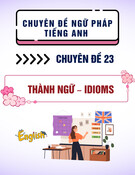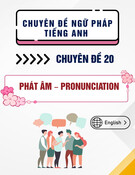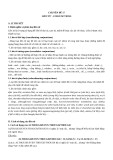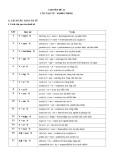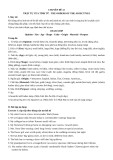
67821&8/785/)&72562)(1/,6+
6/2167516/7(,1729,(710(6(
1HQ7KDQK0LQK
3KDQDKL
(PDLOQHQWKDQKPLQKKHQ
Received:05/08/2024
Revised:17/02/2025
Accepted:26/02/2025
DOI:10.59266/houjs.2025.531
EVWDFWVVHDQR(QLVKLVHQWHDGHGDVDRGLGHWRQHDQG
LVVSRHQLQWKHPDMRLWRQDWLRQVLQGLQ9LHWQDPRHHWKHVWWDDQGWD
dierencesbetweenthetwolanguagesposetranslationchallengesintranslatingEnglishto
9LHWQDPHVH0RHRH LWK LQWHQDWLRQDRPPQLDWLRQ DQG LQWHDWLRQPRH DQGPRH
EnglishcommercialslogansarebeingusedinVietnam.Asaresult,thisstudyaimstoexplore
howculturalfactorsaecttheEnglish-Vietnameseslogantranslationprocessbyanalyzing
VRDQWDQVDWLRQVRP(QLVKWR9LHWQDPHVHLQRPPHHHGDWLRQDQGVRLHWWWKH
VDPHWLPHWKHVWGVHVWVWDQVDWLQVRDQVRPDWDSRLQWRLH
.HRVWDQVDWLRQVRDQRPPHHHGDWLRQVRLHWWH
HongDucUniversity
Student,HongDucUniversity
,,QWURGFWLRQ
DQJDJ LV K PRV VVQLDO
PDQV R FRPPQLFDLRQ RU KPDQ
beings. Manhasmadeitvery aordable
RQUVDQDQFRPPQLFDLKDFK
other;however,itisdiculttoexpressour
thoughts in any second language. Many
languagesgoextinctorvanishovertime.
Besides,everylanguagederivesfromthe
culture of its respective country, which
makesitmoreplentifulandvarious.
As we know, English is now
FRQVLU DQ LQUQDLRQDO ODQJDJ
and is used in most nations, including
Vietnam.However,duetostructuraland
cultural dierences, there arechallenges
in translating English into Vietnamese.
Moreover, English-language slogans
DU QR LOL PRU UTQO DV D
UVO R JOREDO FRPPQLFDLRQ DQ
integration. Translating English slogans
LQR 9LQDPV SRVV FKDOOQJV R
dierencesbetweenthetwolanguages.
In our daily lives, we frequently
FRP DFURVV QPURV VORJDQV LQ D
variety of sectors, but we have no idea
how to translate them properly. As a
result,ithasbeendiscoveredthatthereare
DORRDVFLQDLQJDVSFVRKSURFVV








